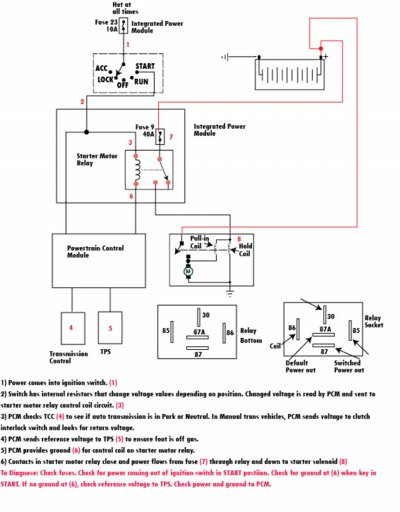No crank no start – Chrysler product
No crank no start – Chrysler product
Alright, so you’re turning the key and getting No crank no start. Well, in the old days, the power ran from the ignition switch down to the starter solenoid and then to the starter motor. There’s no way car makers are gonna make it that simple for you. Every car maker has a different setup and it’s not even the same from model to model within the same maker. But I’ll walk you through a typical Chrysler starting setup. Click on the PDF wiring diagram shown here and follow along.
When you turn the key, power flows from a fuse that hot all the time and into the ignition switch. The ignition switch has internal resistors that change voltage values depending on the key position. The PCM reads the different voltages and figures out when you’re trying to start the engine. If so, it checks the reading from the TPS, the crankshaft position sensor, and the transmission (to make sure it’s in park or neutral). If you have a manual transmission, the PCM sends voltage through the clutch interlock switch and looks for returned voltage.
If all that checks out, the PCM provides ground to the starter motor relay control coil. Power to the relay (to power the solenoid) is provided by a different fuse (so check out those fuses). Once the relay coil is grounded, the contacts provide power to the starter solenoid and that provides power to the starter motor. See how simple that was?
Start by checking fuses. If they’re good, pull the starter motor relay and use a digital multimeter to check the supply and ground side of the relay coil (key in START position). See the relay socket layout in the attached diagram. If the relay isn’t getting ground, you’re not gonna start anything. Before you condemn the PCM, check the voltage coming into the PCM from the ignition switch. If that’s good, check for starter motor relay ground on back at the PCM. Check PCM power and ground connections. Then check for reference voltage at the TPS and Crankshaft sensor. If you’re not getting reference voltage, you may be looking at a bad PCM.
© 2012 Rick Muscoplat
Posted on by Rick Muscoplat
